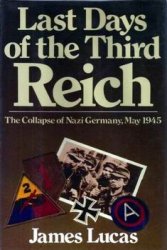The Revenue Act of 1935 was the first major effort of President Franklin D. Roosevelt and the New Deal to reform federal taxation. Part of the Second New Deal of 1935, it became known as the “Wealth Tax,” because Roosevelt sought a more progressive tax structure that would take proportionately much more from business and the wealthy. In its final form, however, “Wealth Tax” was a misnomer, for it fell far short of Roosevelt’s proposal and had little if any impact on the distribution of wealth. It nonetheless did have important political implications.
Roosevelt had contemplated reform of the tax structure since early in his presidency. Partly his concern was to raise revenue to meet growing government expenses under the New Deal, especially given his dedication to balancing the budget. But Roosevelt also wanted a more progressive (graduated) tax system that would take relatively more from business and the very wealthy to pay for social and economic reform that would benefit the struggling and needy. Secretary of the Treasury Henry Morgenthau, Jr., shared those concerns and priorities.
But more lay behind the proposed Revenue Act of 1935 than policy considerations. By 1935, Senator Huey P. Long was building a national following for his “Share Our Wealth” program that called for heavy taxes on the very wealthy to be redistributed so that all Americans could have a home, health and education benefits, and adequate income. Long and others on the left complained that the New Deal had done more to help business and the well-off than to help the poor. And by 1935, the cooperation between the New Deal and business that Roosevelt had hoped to establish had turned into sharp conflict. Politically, then, FDR might profit from appealing to the followers of Long and others without fear of losing business and conservative support that was already vanishing.
In June 1935, Roosevelt sent Congress what soon became known as the “Wealth Tax” (some called it the “soak-the-rich tax”) bill. In addition to reforming the tax structure and raising revenues, FDR believed that his plan would free up money held by wealthy individuals and corporations and thus enhance economic opportunity and efforts at recovery from the Great Depression. The bill called for a graduated tax on corporate incomes, a corporate excess profits tax, and an intercorporate dividends tax. It proposed sharply increasing the maximum tax rate on high incomes and adding a federal inheritance tax to the existing estate tax. And it recommended a constitutional amendment to allow the federal government to tax the interest earned on state and municipal bonds, used by the wealthy to avoid taxes.
The tax bill encountered stiff opposition in the Congress, and the legislation finally passed more than two months later by Congress and signed by Roosevelt did not go nearly as far as the original proposal. The proposed tax rates for wealthy individuals were pared back, and the taxes on corporate income and intercorporate dividends were slashed even more. Congress increased the estate tax but defeated the proposed inheritance tax and the constitutional amendment.
The Revenue Act of 1935 had more important political than policy and economic consequences. Roosevelt could take political credit for proposing the bill and thus steal some of the thunder from critics on the left—and in fact Morgenthau thought that Roosevelt meant the bill mostly as a “campaign document” and worried about what seemed the president’s lukewarm commitment to it. The proposal contributed to the emerging split in the Democratic Party between liberals and conservatives, worsened anti-Roosevelt sentiment among the wealthy, and increased the estrangement of business from Roosevelt and the New Deal. Yet despite the storm over the tax, it did little to either redistribute income or raise revenue.
Further reading: John Morton Blum, Roosevelt and Morgenthau: A Revision and Condensation of From the Morgenthau Diaries (Boston: Houghton Mifflin, 1970); Mark Leff, The Limits of Symbolic Reform: The New Deal and Taxation, 1933-1939 (New York: Cambridge University Press, 1984).




 World History
World History









